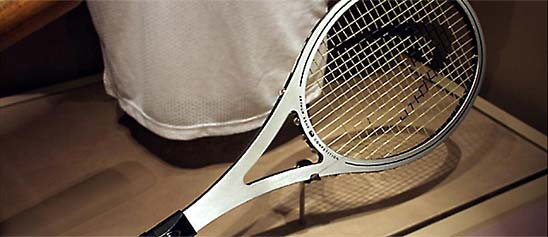White canvas backpack with a black leather bottom and a red embroidered rose on the back. Baker began skating at an early age, winning bronze at the 2006 X-Games at 15. It took 8 years to finally win gold but when they did, it was on their own terms, as a queer skater.
- Description (Brief)
-
White canvas backpack with a black leather bottom and a red embroidered rose on the back. Baker began skating at an early age, winning bronze at the 2006 X-Games at 15. It took 8 years to finally win gold but when they did, it was on their own terms, as a queer skater. Baker went on to win the Street League Skateboarding Super Crown World Championship in 2016 but it was 2017 that proved to be a pivotal year for Baker. Earning a spot on the Nike team, creating the first women’s skate shoe for Nike SB, quitting their day job as a graphic designer and moving to New York City whose ‘melting pot of communities feels like the right fit,’ are just a few changes they made once they dedicated themself, full time, to skate. They are sponsored by Meow Skateboards, a company owned by women, representing women skaters which Baker hopes is a growing entity in the sport.
-
Baker is also involved with Brian Anderson and his Cave Homo zine which they say, “helped me feel validated and seen for who I am beyond my skateboarding identity. That’s really important for me, because for a long time the industry wanted to shape me in a way that wasn’t me.” Wanting to keeptheir long blonde hair and be ‘more feminine’ were the stereotypes Baker could not represent as a queer skater and while leaving sponsors could be devastating to skaters, they refused to compromise their integrity and it has paid off immensely. Baker relates, “To be unapologetic about my image and who I am and then to have people acknowledge how important that is in the skate industry… I can’t even describe how that feels. To bring together girls who skate, queers who skate… and let those worlds collide. I’m lucky to be here.”
-
Skate is still working on its acceptance of gay or queer skaters but many of the girls who Baker skates with are queer or gay and her guy friends didn’t care if they were gay, so they felt accepted although their male counterparts deal with a “toxic masculinity” where there is a greater need to be masculine. Their hope for inclusion is contagious, “I would love to just carve out a bigger space for women who skate, and queer people who skate and gender non-conforming people… and just like, really open up that space for people like me, and people that understand what it’s like to experience life this way.”
- Location
-
Currently not on view
- user
-
Baker, Leo
- ID Number
-
2018.0276.04
- accession number
-
2018.0276
- catalog number
-
2018.0276.04
